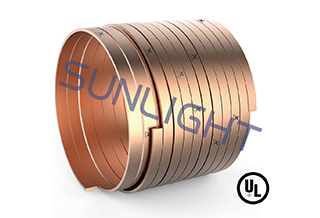views
Definition and performance characteristics of grounding mould
The grounding mould is also called "non-metal grounding mould", "low resistance grounding mould", "grounding resistance reduction mould", "resistance reduction mould", "grounding resistance reduction mould", "long-term non-metal grounding device". According to the shape, it is divided into: flat grounding mould, cylindrical grounding mould, three quincunx grounding mould, six quincunx grounding mould, trapezoidal grounding mould, disc-shaped grounding mould.
The grounding mould is mainly composed of high-conductivity carbon powder, moisture-absorbing and moisturizing materials, curing materials, etc., and a metal material with an anti-corrosion treatment on the surface as the skeleton. It is extruded by special equipment and is a special product used to reduce grounding resistance. The grounding mould is suitable for various types of soil environments, and has significant advantages when applied in areas with high soil resistivity. It is mainly used as a grounding body for "building grounding", "lightning protection grounding", "anti-static grounding" and other purposes.

Performance characteristics of grounding mould:
1. The main material of the grounding mould is similar to the physical structure of the soil, and it can be integrated with the soil, so that the effective contact area of the grounding body and the soil is increased many times compared with the traditional metal grounding body, which increases the dispersion area of the grounding body itself, greatly Reduce the contact resistance between the grounding body and the soil.
2. Strong moisture absorption and moisturizing ability to ensure that the grounding mould can effectively exert its conductivity. Since the conductive properties of the conductive objects in the grounding body are not affected by climate changes such as dry humidity, high and low temperatures, stable grounding and low resistance are provided.
3. The non-metallic materials in the grounding mould form a low-resistance area with gentle changes between the metal and the soil with a large difference in resistivity. When encountering a large current impact, the potential gradient of the grounding body and the grounding wire is significantly reduced, and the step voltage and contact voltage are reduced, thereby reducing the probability of potential counterattack.
4. The use of metal materials with anti-corrosion treatment on the surface greatly prolongs the service life.
5. Easy installation, greatly reducing the workload of construction and installation.
Sichuan Sunlight provides customers with high-quality lightning protection grounding products. Our grounding moulds have many excellent performance characteristics. If you want to know more news about grounding moulds, please continue to pay attention to Sunlight website.
Tag: grounding mould, characteristics of grounding mould











